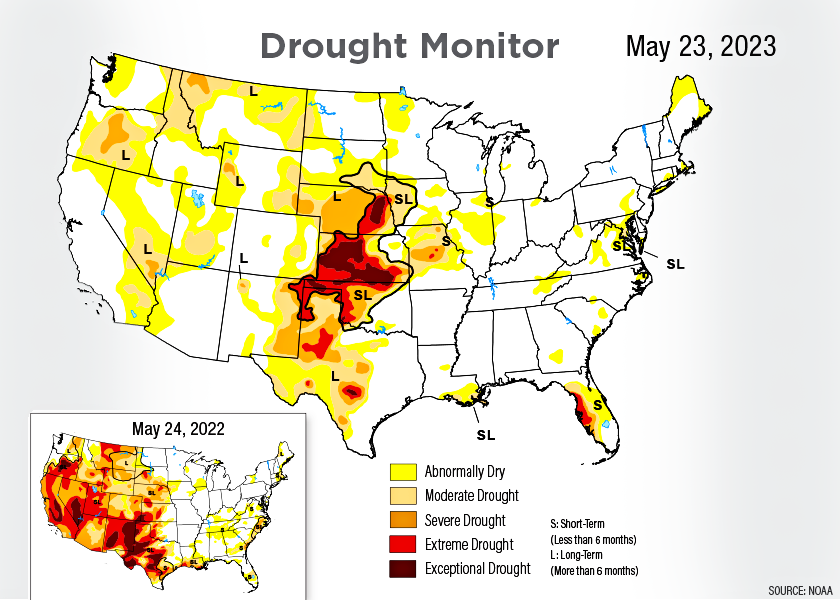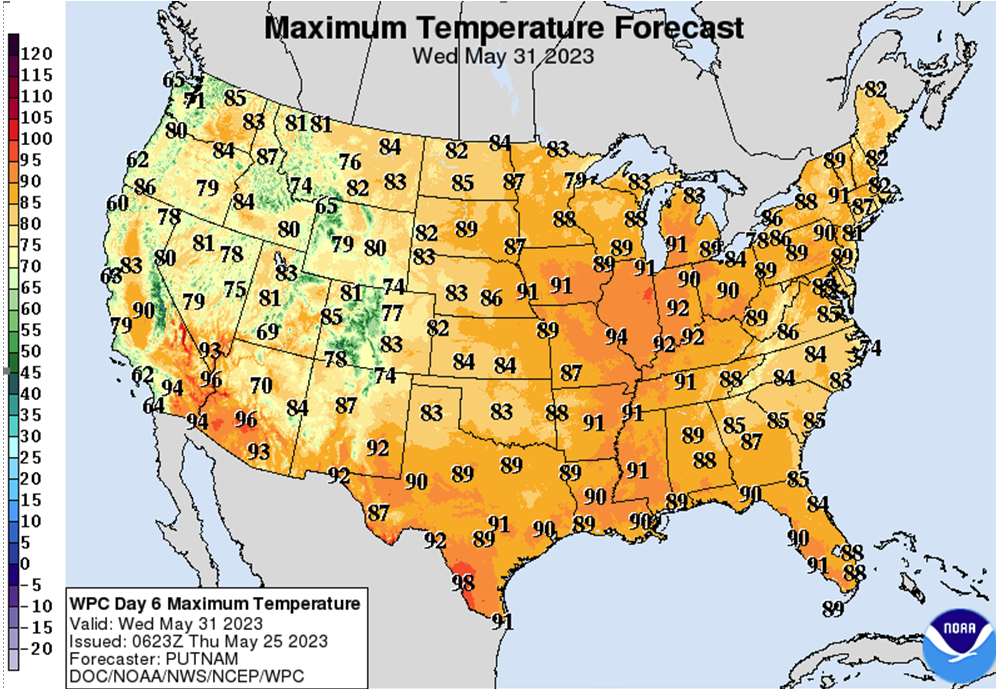Corn, Soybeans and Wheat in the Grips of Drought

Is a flash drought underway in the Corn Belt? Or, is what’s underway in farm country just some passing dryness?
Those are questions USDA Meteorologist Brad Rippey is evaluating as the month of May comes to a close. He says it’s easy to see why farmers in some parts of the country are concerned.
“It has been dry over much of the Midwest for the last one to three months, depending on the location,” Rippey says.
That four- to 12-week period of dryness fits the classic definition of flash drought provided by the American Meteorological Society. It classifies a flash drought as “an unusually rapid onset drought event characterized by a multi-week period of accelerated intensification that culminates in impacts to one or more sectors, such as agricultural or hydrological impacts.”
Chicago Area Reports The Second-Driest May On Record
Rippey says the area in and around Chicago is exhibiting symptoms of a flash drought. Historical weather data shows Chicago is headed for its second-driest May on record, with a likely 2023 rainfall total of only 0.42 inch, he says.
The driest May on record in Chicago occurred in 1992 with only 0.30 inch.
“In 1992, it was also a very cool year, partly due to the influence of Mount Pinatubo (in the Philippines), which had erupted the year before,” Rippey recalls.
This year, farmers aren’t seeing volcanic ash, but instead hazy Midwestern skies due to rampant Canadian forest fires.
“It’s not a viable comparison, but still rather interesting that in both 1992 and 2023, the Midwest has been dealing with varying degrees of spring dryness, along with upper-atmospheric particulate matter that has reduced the amount of solar radiation reaching the Earth’s surface,” Rippey says.
The good news for farmers in 1992 was that rain arrived in the nick of time before Midwestern crops entered the reproduction period. That moisture was credited with delivering bumper yields for many growers that fall. USDA-NASS records show that corn yields in 1992 reached a new average high of 131.5 bushels per acre.
What Crops Are Experiencing Drought Now?
Some parts of the U.S. have seen prolonged periods of drought since last year. “(Much of the) longer-term dryness has been showing up west of the Mississippi River,” Rippey reports.
A look at the U.S. Drought Monitor released on Thursday shows that nearly 100% of Kansas and Nebraska are experiencing moderate to severe drought, and the core of Kansas is in exceptional drought.
Portions of Illinois, Iowa, Oklahoma, South Dakota and Texas are also enduring drought conditions.
How does the drought areas match up with what crops are experiencing? The U.S. Drought Monitor shows that the percentage of crop acres currently in some level of drought include:
• 26% of corn acres
• 36% of cotton acres
• 20% of soybean acres
• 47% of wheat acres
The good news, though, is these percentages are currently no where near what farmers saw play out in their fields in 2012. This story provides a reminder of the drought that unfolded that season: Drought Levels Enter 2012 Territory
The 2023 Growing Season Has A Long Way To Go
Weather statistics for 2023 are still in play as the growing season is barely underway. The best stat for the recordbooks so far – farmers have made strong strides with getting their corn and soybean crops planted.
By May 21, corn planting nationwide was 81% completed, according to the USDA Crop Progress & Condition report released last week. Furthermore, Iowa and Illinois farmers had more than 90% of their corn crop planted.
Likewise, 66% of the country’s soybeans were planted, and 36% of the crop had emerged.
Rippey adds that sufficient topsoil moisture was available through this week to support good emergence of both crops.
But looking ahead, he says little to no rain is projected for the Memorial Day holiday and through next week, aside from a few showers.
"It’s easy to see why flash drought concerns are building. Temperatures are going to start rising through the holiday weekend, and by the middle of next week we’re looking at this," Rippey says, referencing this map showing expected temperatures.
The good news for now is that the reproduction period for the 2023 corn crop is still weeks away. There is still plenty of time for the crop to get the moisture it needs to fill ears with kernels.
“We are not yet anywhere near the point of no return,” Rippey says.
Farmers in This State are Planting Corn Quicker Than They Did During the Drought Year of 2012
As El Niño Makes Its Grand Return, Here's What It Tells Us About Summer Weather and Corn Yields
Breakneck Planting Pace Sets New Record for Missouri Farmers
Big Corn Yields for Illinois Farmer Rooted to Hybrid and Fungicide








